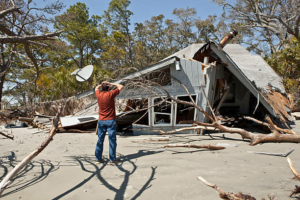Weathering the Storm: The Ultimate Guide to Inspecting Homes in Extreme Climates
Extreme climates can take a toll on homes, leading to wear and tear that’s often hidden from plain sight. Whether it’s the blistering heat of summer, the freezing cold of winter, or the relentless forces of hurricanes, homes need to be resilient to withstand these conditions. In this guide, we’ll walk you through the key areas to focus on when inspecting homes in extreme climates, ensuring they are safe, durable, and ready to weather any storm.
The Importance of Climate-Specific Inspections
### Why Climate Matters
Homes in different regions face unique challenges. A home in Texas, for example, must withstand intense heat, while one in Alaska needs to be insulated against freezing temperatures. Understanding the specific climate-related risks is crucial for a thorough inspection.
### Common Issues in Extreme Climates
Extreme climates can cause a range of problems, from foundation cracks to roof damage. These issues can lead to costly repairs if not addressed early. Regular inspections tailored to the local climate can help homeowners maintain their properties and avoid major headaches down the line.
Inspecting Homes in Hot Climates
### Roof and Attic Ventilation
In hot climates, the roof and attic are exposed to intense heat, which can cause shingles to deteriorate and energy bills to skyrocket. Inspect the roof for any signs of damage, such as curling or missing shingles. Ensure that the attic is properly ventilated to prevent heat buildup and prolong the lifespan of the roofing materials.
### HVAC System Efficiency
An efficient HVAC system is essential in hot climates. Check the system for any signs of wear, and make sure it’s properly sized for the home. A well-maintained HVAC system will keep the home cool and reduce energy consumption.
### Foundation and Soil Stability
Heat can cause soil to expand and contract, leading to foundation issues. Inspect the foundation for cracks or signs of shifting, especially in areas prone to drought. Regular maintenance, such as watering the foundation, can prevent these problems.
Inspecting Homes in Cold Climates
### Insulation and Sealing
In cold climates, insulation is key to keeping a home warm and energy-efficient. Inspect the insulation in the attic, walls, and floors to ensure it’s adequate. Check for drafts around windows and doors, and make sure they are properly sealed.
### Plumbing Protection
Freezing temperatures can cause pipes to burst, leading to water damage. Inspect the plumbing system for any signs of wear, and ensure that pipes are insulated, especially in unheated areas like basements and crawl spaces.
### Roof Snow Load
Heavy snowfall can put a strain on the roof. Inspect the roof for signs of sagging or damage that could indicate a structural issue. Ensure that the roof is designed to handle the snow load typical for the region.
Inspecting Homes in Hurricane-Prone Areas
### Roof Integrity and Wind Resistance
In hurricane-prone areas, the roof is the first line of defense against high winds. Inspect the roof for loose shingles or tiles, and ensure that it’s securely fastened. Consider installing hurricane straps or clips to improve wind resistance.
### Window and Door Reinforcements
Windows and doors are vulnerable to wind and debris during a hurricane. Inspect them for any cracks or weaknesses, and consider upgrading to impact-resistant glass. Make sure doors are equipped with sturdy locks and hinges.
### Flood Prevention
Hurricanes often bring heavy rain and flooding. Inspect the home’s drainage system, including gutters, downspouts, and grading, to ensure water is directed away from the foundation. Consider installing a sump pump in areas prone to flooding.
Year-Round Maintenance Tips
### Regular Inspections
Homes in extreme climates benefit from regular inspections. Schedule inspections at least twice a year—before the harshest season begins and after it ends. This ensures that any damage is caught early and repairs can be made promptly.
### Emergency Preparedness
Prepare for extreme weather by creating an emergency plan and kit. Include essentials like water, non-perishable food, flashlights, and a first-aid kit. Know the evacuation routes and have a communication plan in place.
### Seasonal Upgrades
Consider seasonal upgrades to protect your home. In hot climates, install UV-blocking window films. In cold climates, add extra insulation. In hurricane-prone areas, invest in storm shutters. These upgrades can improve your home’s resilience and comfort.

Inspecting homes in extreme climates requires a keen eye and an understanding of the unique challenges these environments present. By focusing on the key areas we’ve outlined—whether it’s ensuring proper ventilation in hot climates, insulation in cold climates, or wind resistance in hurricane zones—you can help homeowners protect their investments and ensure their homes are safe and comfortable year-round. Regular inspections and proactive maintenance are essential in weathering any storm.

Leave a Reply
Want to join the discussion?Feel free to contribute!